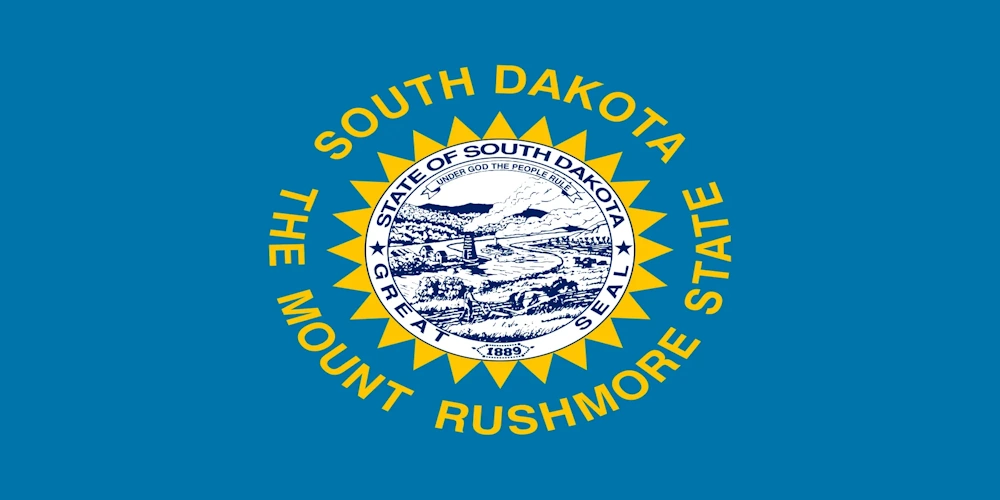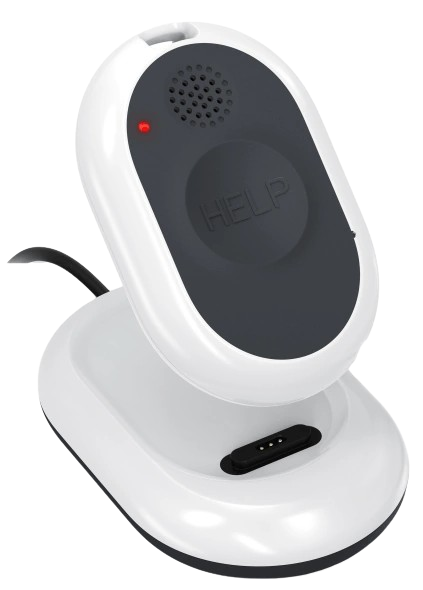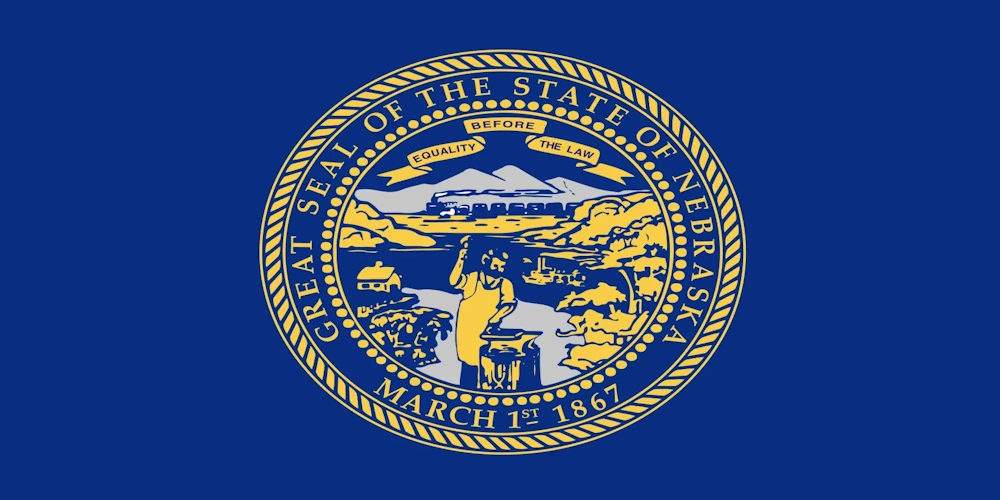South Dakota’s economy includes diverse sectors such as agriculture, energy, healthcare, construction, and transportation—many of which rely on employees working alone or in remote areas. These lone workers, whether they’re home health aides, utility technicians, or long-haul drivers, operate without the immediate presence of coworkers or supervisors, placing them at greater risk for injury, illness, or emergency situations. Employers must proactively assess and address these risks to ensure a safe working environment.
South Dakota does not operate its own OSHA-approved occupational safety and health plan, meaning the state is under the authority of federal OSHA (Occupational Safety and Health Administration) for private-sector workplace safety. Public sector employees in South Dakota are not covered by OSHA unless otherwise designated through alternative arrangements or programs.
On This Page
Our Guide To Lone Worker Safety Policy And Legislation In South Dakota
Since South Dakota falls under federal OSHA jurisdiction, employers in the state must comply with national occupational safety and health regulations. While federal OSHA does not currently have a lone worker-specific regulation, multiple standards apply to situations where employees work without direct supervision or immediate assistance.
The General Duty Clause of the Occupational Safety and Health Act requires all employers to provide a workplace free from recognized hazards. This includes addressing risks specific to lone work, such as delayed emergency response or increased exposure to environmental or human threats.
Employers in South Dakota are encouraged to leverage OSHA’s online resources, training materials, and consultation programs to improve lone worker safety and ensure compliance.
How South Dakota Defines A Lone Worker
There is no formal definition of "lone worker" in South Dakota law. However, the term is commonly used to describe employees who perform tasks alone and without close supervision or immediate backup in case of emergency.
Common examples of lone workers in South Dakota include:
- Farmhands or equipment operators working independently
- Utility and telecom field service workers
- Delivery drivers and couriers
- Home healthcare providers and hospice staff
- Security personnel in remote or after-hours roles
- Oil, gas, or wind energy field workers
These individuals often work in environments where visibility is low, hazards are unpredictable, or assistance is delayed—making appropriate safety measures critical.
Employing A Lone Worker In South Dakota
Even without a specific lone worker regulation, South Dakota employers must comply with OSHA’s broader requirements for hazard assessment, emergency planning, and worker safety. The absence of a coworker does not reduce an employer’s duty to protect the health and well-being of their staff.
Best practices for managing lone worker safety include:
- Conducting Risk Assessments: Identify the specific hazards involved in lone working environments.
- Establishing Communication Plans: Provide mobile phones, radios, or lone worker safety apps with automatic alerts.
- Implementing Emergency Protocols: Ensure employees know what to do and who to contact in case of incident.
- Scheduling Check-ins: Use manual or automated systems to track employee well-being throughout shifts.
- Providing Training: Educate workers on situational awareness, hazard response, and reporting procedures.
By applying these practices, employers demonstrate a commitment to safety and reduce the risk of OSHA citations or legal liability.
Learn How You Can Protect Your Employees With Loneworker.com

With Loneworker.com you can be equipped with the knowledge and the means to protect your employees and protect your business. Contact us today to learn more about how Loneworker.com can protect you and your employees.
How The Safe Lone Worker App Can Protect South Dakota Lone Workers And Employers
The Safe Lone Worker app is designed to enhance protection for employees who work alone or in isolated areas. Features such as real-time GPS monitoring, scheduled check-ins, panic buttons, and fall detection make it easier for employers to stay connected with their workers and respond quickly to emergencies.
Whether your team is operating across rural farms, highways, or industrial sites, the app provides peace of mind and strengthens compliance with OSHA standards.
Whether your team operates in homes, on the road, or in remote industrial facilities, this app can strengthen your safety protocols and support OSHA compliance efforts.
South Dakota Lone Worker Policies
South Dakota does not operate a state-run OSHA program, meaning federal OSHA regulations apply to private-sector workplaces statewide. Although OSHA does not mandate a standalone “lone worker” rule, employers are required to ensure the safety of employees in all working conditions, including those working alone.
This content is provided for general guidance only and is not a substitute for legal advice or official regulatory consultation.
South Dakota Lone Worker Resources
OHS Contact Centre
- 1-866-415-8690
CDC / NIOSH
- 800-232-4636

Affordable Monitoring For Lone Workers In South Dakota

-
 Monitoring Your Employees' Safety
Monitoring Your Employees' Safety
-
 GPS Tracking And Monitoring
GPS Tracking And Monitoring
-
 Man Down Panic Alerts
Man Down Panic Alerts
-
 24/7 Protection Anywhere
24/7 Protection Anywhere
Lone Worker Legislation
Lone Worker Safety Policies And Legislation By State
-
 Alabama State Safety Policies And Legislation
Alabama State Safety Policies And Legislation
-
 Alaska State Safety Policies And Legislation
Alaska State Safety Policies And Legislation
-
 Arizona State Safety Policies And Legislation
Arizona State Safety Policies And Legislation
-
 Arkansas State Safety Policies And Legislation
Arkansas State Safety Policies And Legislation
-
 California State Safety Policies And Legislation
California State Safety Policies And Legislation
-
 Colorado State Safety Policies And Legislation
Colorado State Safety Policies And Legislation
-
 Connecticut State Safety Policies And Legislation
Connecticut State Safety Policies And Legislation
-
 Delaware State Safety Policies And Legislation
Delaware State Safety Policies And Legislation
-
 Florida State Safety Policies And Legislation
Florida State Safety Policies And Legislation
-
 Georgia State Safety Policies And Legislation
Georgia State Safety Policies And Legislation
-
 Hawaii State Safety Policies And Legislation
Hawaii State Safety Policies And Legislation
-
 Idaho State Safety Policies And Legislation
Idaho State Safety Policies And Legislation
-
 Illinois State Safety Policies And Legislation
Illinois State Safety Policies And Legislation
-
 Indiana State Safety Policies And Legislation
Indiana State Safety Policies And Legislation
-
 Iowa State Safety Policies And Legislation
Iowa State Safety Policies And Legislation
-
 Kansas State Safety Policies And Legislation
Kansas State Safety Policies And Legislation
-
 Kentucky State Safety Policies And Legislation
Kentucky State Safety Policies And Legislation
-
 Louisiana State Safety Policies And Legislation
Louisiana State Safety Policies And Legislation
-
 Maine State Safety Policies And Legislation
Maine State Safety Policies And Legislation
-
 Maryland State Safety Policies And Legislation
Maryland State Safety Policies And Legislation
-
 Massachusetts State Safety Policies And Legislation
Massachusetts State Safety Policies And Legislation
-
 Michigan State Safety Policies And Legislation
Michigan State Safety Policies And Legislation
-
 Minnesota State Safety Policies And Legislation
Minnesota State Safety Policies And Legislation
-
 Mississippi State Safety Policies And Legislation
Mississippi State Safety Policies And Legislation
-
 Missouri State Safety Policies And Legislation
Missouri State Safety Policies And Legislation
-
 Montana State Safety Policies And Legislation
Montana State Safety Policies And Legislation
-
 Nebraska State Safety Policies And Legislation
Nebraska State Safety Policies And Legislation
-
 Nevada State Safety Policies And Legislation
Nevada State Safety Policies And Legislation
-
 New Hampshire State Safety Policies And Legislation
New Hampshire State Safety Policies And Legislation
-
 New Jersey State Safety Policies And Legislation
New Jersey State Safety Policies And Legislation
-
 New Mexico State Safety Policies And Legislation
New Mexico State Safety Policies And Legislation
-
 New York State Safety Policies And Legislation
New York State Safety Policies And Legislation
-
 North Carolina State Safety Policies And Legislation
North Carolina State Safety Policies And Legislation
-
 North Dakota State Safety Policies And Legislation
North Dakota State Safety Policies And Legislation
-
 Ohio State Safety Policies And Legislation
Ohio State Safety Policies And Legislation
-
 Oklahoma State Safety Policies And Legislation
Oklahoma State Safety Policies And Legislation
-
 Oregon State Safety Policies And Legislation
Oregon State Safety Policies And Legislation
-
 Pennsylvania State Safety Policies And Legislation
Pennsylvania State Safety Policies And Legislation
-
 Rhode Island State Safety Policies And Legislation
Rhode Island State Safety Policies And Legislation
-
 South Carolina State Safety Policies And Legislation
South Carolina State Safety Policies And Legislation
-
 South Dakota State Safety Policies And Legislation
South Dakota State Safety Policies And Legislation
-
 Tennessee State Safety Policies And Legislation
Tennessee State Safety Policies And Legislation
-
 Texas State Safety Policies And Legislation
Texas State Safety Policies And Legislation
-
 Utah State Safety Policies And Legislation
Utah State Safety Policies And Legislation
-
 Vermont State Safety Policies And Legislation
Vermont State Safety Policies And Legislation
-
 Virginia State Safety Policies And Legislation
Virginia State Safety Policies And Legislation
-
 Washington State Safety Policies And Legislation
Washington State Safety Policies And Legislation
-
 West Virginia State Safety Policies And Legislation
West Virginia State Safety Policies And Legislation
-
 Wisconsin State Safety Policies And Legislation
Wisconsin State Safety Policies And Legislation
-
 Wyoming State Safety Policies And Legislation
Wyoming State Safety Policies And Legislation
-
 American Samoa State Safety Policies And Legislation
American Samoa State Safety Policies And Legislation
-
 Guam State Safety Policies And Legislation
Guam State Safety Policies And Legislation
-
 Northern Mariana Islands State Safety Policies And Legislation
Northern Mariana Islands State Safety Policies And Legislation
-
 Puerto Rico State Safety Policies And Legislation
Puerto Rico State Safety Policies And Legislation
-
 Washington D.C. State Safety Policies And Legislation
Washington D.C. State Safety Policies And Legislation
-
 Virgin Isles State Safety Policies And Legislation
Virgin Isles State Safety Policies And Legislation







